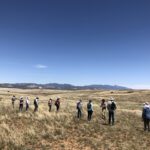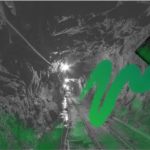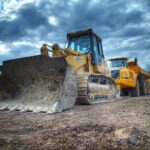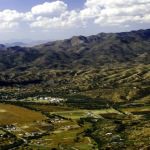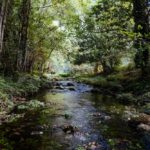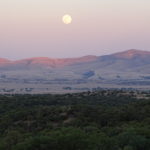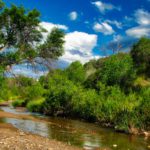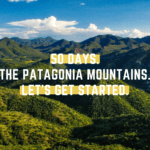
Sep 2, 2020 | Blog
At Patagonia Area Resource Alliance (PARA), our mission is to protect the water and wildlife from the pressures and realities of 21st-century industrialized mining. As such, we have watched, with concern, the current U.S. administration weaken long-standing environmental laws at a national level. From rolling back the National Environmental Policy Act (NEPA) to repealing parts of the Clean Water Act that “significantly narrows and limits which waters and wetlands are protected under the Clean Water Act from pollution, degradation and destruction” (source: Earthjustice), these directives harm the environment and negatively impact global chances to stop climate change.
The results of the November 3, 2020 election will likely determine how these issues (and the ones in Arizona’s Santa Cruz County, listed below) progress. To ensure positive change, it is up to us—people in our local and state communities—to push back against these mounting environmental issues. One of the many ways we can do this is to mobilize against the plans of corporations and government agencies by 1) voting, 2) calling and emailing Santa Cruz County supervisors about local mining concerns, and 3) submitting an op-ed to a local newspaper. (For op-ed writing tips, keep reading!)
Environmental Concerns in Santa Cruz County
While national issues are mounting ahead of the 2020 election—which is only two months away—so too are local issues in Santa Cruz County. The Town of Patagonia and surrounding areas face widespread road and water impacts from senior Australian mining company South32. These impacts threaten the people and wildlife that rely on the region for water and shelter.
Roads Issues:
On August 4th, South32 held an invitation-only presentation for Red Rock Acres property owners. They officially declared their chosen exit route during this event: the “Cross Creek Connector” route that runs from Harshaw Road (just outside the Town boundaries) to State Highway 82. South32 then intends to proceed east on Highway 82 to Sonoita, where they’ll turn onto Highway 83 and head for Tucson. (Here are the slides and meeting minutes from the August 4th meeting.)
To make this chosen exit route a reality, South32 will need to construct a 32-foot wide industrial arterial road for heavy trucks to use while transporting ore between the mine site and Tucson. In order to connect Harshaw Road to State Highway 82, they plan to put the industrial road through a rural residential area.
Common sense says the proposed arterial road should require rezoning and other permitting processes, which would give residents the opportunity to challenge South32’s plans. However, PARA has been told by Santa Cruz County staff that the mining company can put in this arterial road without even going through a rezoning process.
The communities in Santa Cruz County must speak up about these processes. The arterial road South32 wants to put in will have a huge negative impact, creating safety issues that threaten the land, residents, and businesses that live and operate along Highways 82 and 83. If rezoning and permitting processes are not required, for-profit mining corporations will be left unchecked and cause ecological, biological, and residential damage for years to come.
Read more in this article from the local newspaper, Patagonia Regional Times.
Water Issues:
The 128,000-acre Sonoita Creek Watershed is a major tributary to the Santa Cruz River and the greater watershed that serves more than a million people. It is also the only source of potable water for the Town of Patagonia with over 900 residents and 300 private well users within a three-mile radius of town. The shallow depth of the aquifers, combined with the nature of the soils and underlying geology, make the relationship between the surface and groundwater watersheds a particularly close and interconnected one.
In an August public presentation to the Patagonia Town Council, South32 shared their plans for a “dewatering project” in the Sonoita Creek Watershed. The minerals this company wants to mine are located about 1,500 feet below ground. Meanwhile, the water level is at 100 feet. The company’s proposed water drawdown (estimated at 1.6 billion gallons of water per year for the first four years, followed by water withdrawal during operation) will dramatically reconfigure the watershed and significantly impact the ability for species survival in and around the Patagonia Mountains, a dry Sky Island range in an already drought-affected region.
Learn more about the Sonoita Creek Watershed in this video.
Arizona is considered one of the top ten most mining-friendly jurisdictions in the United States, and this status allows foreign mining companies to easily access minerals and metals in sensitive and biologically diverse areas without much oversight from the Forest Service. The state of Arizona’s pro-mining position makes both voting against and opposing these issues critical.
How to Write an Op-Ed
Here are three tips for writing and submitting an op-ed to your local paper. (In Santa Cruz County, this includes the Patagonia Regional Times and the Nogales International.)
#1. Keep it short.
Readers are more likely to engage with community letters when they’re kept short and pointed. While writing, quickly state what the issue is and what you’d like local residents to do about it. If you need help figuring out how to structure your letter, consider reading a few already-published op-eds before you start drafting.
You’ll also want to check with the paper to see what their requested word limit is. Make sure to stay within the limit provided (usually 300-500 words). Otherwise, the paper’s editor may trim portions of your letter, which could unintentionally change the meaning of your message.
#2. Tell the reader who you are.
Readers often want to know a little about the op-ed’s author. In the body of the letter, make sure to state who you are (your name and any community affiliations you have), where you live, and why this specific issue matters to you. What stakes do you have in the issue, and why do you support/oppose it?
For example, if a proposed road will run through your residential community, tell the reader that and share how the construction and use of this road will affect your health, wellbeing, property values, family safety, business, etc.
#3. Include a call to action.
You’ve hooked the reader and have successfully given them a short, to-the-point view of your community issue. You’ve also included who you are and why the issue matters to you. Now comes the final part: ending the op-ed with an action call.
As you write, think about what you want the reader to do. What is the takeaway of your op-ed? Should they call a county representative and ask them to support/oppose the issue? Should they vote in the upcoming election? Should they join a protest you’re putting together? Or perhaps the call-to-action is simply a request for the reader to think about their role in these concerns—do they have a stake in the issues you’ve described? There is no right or wrong way to write a call-to-action. Every one is different; you’ll know what is needed once the draft is complete.
Need additional guidance? While we can’t write your op-ed letter for you, we (the team at PARA) can help you track down word limits, send you resources on mining risks that you can use in your writing, and more. Feel free to contact us at info@patagoniaalliance.org with any op-ed writing questions you might have.

Apr 7, 2020 | Blog
Many of us rely on information shared by industries, scientists, and economic professionals. We follow published reports—reading them in hopes we’ll learn something new, make better decisions, or plan appropriately for our lives. However, not all reports are created equal. Some of them take advantage of public trust, concealing underlying facts that could change how we view their data.
Knowing how to tell fact from fiction is a great skill to have. Use this blog to learn what to look for in economic reports, and you’ll become a savvy reader in no time!
What are economic reports?
Economics reports highlight statistics and numbers, usually financial, about the impacts particular companies, areas, or industries may have on local economies. These reports can cover economies at a community, state, or federal level and often include an outlook on job prospects, median incomes, population numbers, and tax revenues. They may also use scientific data or agency findings to back their claims.
What to look for in a report?
Most reports can be trustworthy and accurate if they use the information in a genuine way.
However, it’s important to remain skeptical: don’t just take the report at face value. Communication professionals in master’s programs (like the author of this article) learn how to vet journals and reports during school. You can learn this too, and you don’t even need to pursue higher education!
Here are a few things to look for when reading scientific or economic reports:
Questionable Funding Sources
The first thing to check is the report’s funding sources. Was the report developed independently, or did the report’s authors, university, or agency accept payment for the work done?
Funding in itself isn’t a red flag. While scientists often get grants for their projects, many universities and agencies cannot produce work without money—and many often do work for specific clients. However, there is a big difference between simply accepting funding (and then doing the work independently) and accepting funding that then directly impacts the report’s results.
Start by looking at the report topic, then look at the funding source. Could the funder be directly impacted by the results of the report?
Here’s an example:
Let’s say a lab releases a report on how Aspirin (negatively or positively) affects Alzheimer’s patients. If some of the funding comes from a company that produces Aspirin, you should assume the company is very interested in the results of the report being positive. Proceed carefully.
Here’s a real-life example:
In 2017, Arizona State University released an economic impact report on mining in Arizona. This Chamber of Commerce article reports on the “mine of tomorrow,” writing: “According to a 2017 economic impact by the L. William Seidman Research Institute at the W. P. Carey School of Business at Arizona State University that was commissioned by Arizona Mining, the project would benefit Santa Cruz, Pima, and Cochise counties, and Arizona as a whole.”
Take a careful look at who funded the report. It was written by a university but commissioned—in other words, paid for—by Arizona Mining Inc. (AMI), a mining company operating in the Patagonia Mountains (they have since been purchased by South32).
As a result, this 2017 economic report is likely biased. It only talks about what the project expects to add to the economy in a perfect-world scenario; there was no discussion of the downsides of this level of industrialized mining in a biologically diverse ecosystem. A better report would forgo funding by a mining company and deliver real, honest information on the benefits and pitfalls of mining on economies in southwest Arizona. By pushing this report independently, the writers and experts would’ve had less pressure to please AMI with their final product.
For a true idea of what impact mining could have on Arizona communities, look for economic reports that are independently researched and produced. And when in doubt, always do your own fact checking.
Partial Author Affiliations
Does the report’s funding seem squeaky clean? Or perhaps it’s independently developed? We’re making progress, but the report isn’t off the hook yet. The next step is to check the authors and review their listed affiliations.
Even if a report isn’t directly funded, its writers and contributors can be. An expert that contributes to an economic report on a particular industry, for example, may work for an agency or organization that only supports that industry. A scientist may have consulted on pro-industry reports in the past and therefore does not have an unbiased perspective on the topic.
Here’s an example:
A university publishes their findings on the benefits of consuming dairy. It is funded by general grants, so the funding source is clean. However, two of the experts have a long list of publications they’ve contributed to about dairy and health. Looking deeper, several of the previous publications were funded by the dairy industry. One expert also worked as a fellow for a dairy association.
Be wary of these affiliations. Proceed with caution and vet the facts.
As for our real-life example…
The 2017 economic report by the L. William Seidman Research Institute at the W. P. Carey School of Business at Arizona State University does not list who worked on the report. There are no author names attached, and the report does not indicate whether the information within was reviewed by a team of independent editors or economists. This makes it hard to give the authors a background check—and makes it even harder to know whether we should trust the data provided.
Biased Sources
If funding sources and author affiliations are A-OK, it’s likely the report is unbiased. There’s just one last thing to check now: the resources the authors used to back their claims. When looking at the sources, scan for the following red flags.
- Old sources only: A mix of old and new sources ensure there are no gaps in research.
- Many sources by one author: One author could be biased or have questionable affiliations.
- Non-peer reviewed sources: Peer-reviewed sources are vetted by a committee of scientists or editors, which makes them more likely to be accurate.
- Non-scientific sources: Don’t trust anything that quotes tabloids or clickbait materials.
- Industry sources: For a report, you want the sources to come from trustworthy sites, not from the industry that has a lot to gain from a glowing review.
As for our real-life example…
The 2017 economic report lists six references. These include a resource by Ernst & Young (a company that offers professional services, like tax and financial, to industries including mining) and a technical report provided by Arizona Mining Inc. Furthermore, the report states that inputs (e.g., the data) were provided by the Hermosa Project—not pulled or projected independently.
The bottom line
Many economic reports are valid. We don’t want you to be jaded, but we do encourage you to be skeptical of what you read. If you take reports with a grain of salt and put in a little bit of research yourself, you’ll quickly be able to determine if the information presented is accurate or not.
BONUS: Here are a few more tips for you as you foray into the world of report reading!
- If the journal article/report praises a specific agenda, it may be one-sided.
- Always look for third-party verifications of the report. Have trustworthy websites/journalists/scientists reviewed the information? Do they agree or disagree with the report? Can you find other sources that back up—or dismiss—the report?
- Do the statistics and data in the report make sense? Ask someone else to take a look, then see what conclusion they come to. Sometimes fresh eyes can be very helpful!
Anna Sofia is PARA’s Communications and Outreach Coordinator. She has a B.A. in Technical Communication & Professional Writing and is currently an M.A. candidate for a degree in Science Writing. Anna believes deeply in protecting the water and wildlife of the Patagonia Mountains, and holds that all organizations should consider scientific facts first before making decisions for profit.
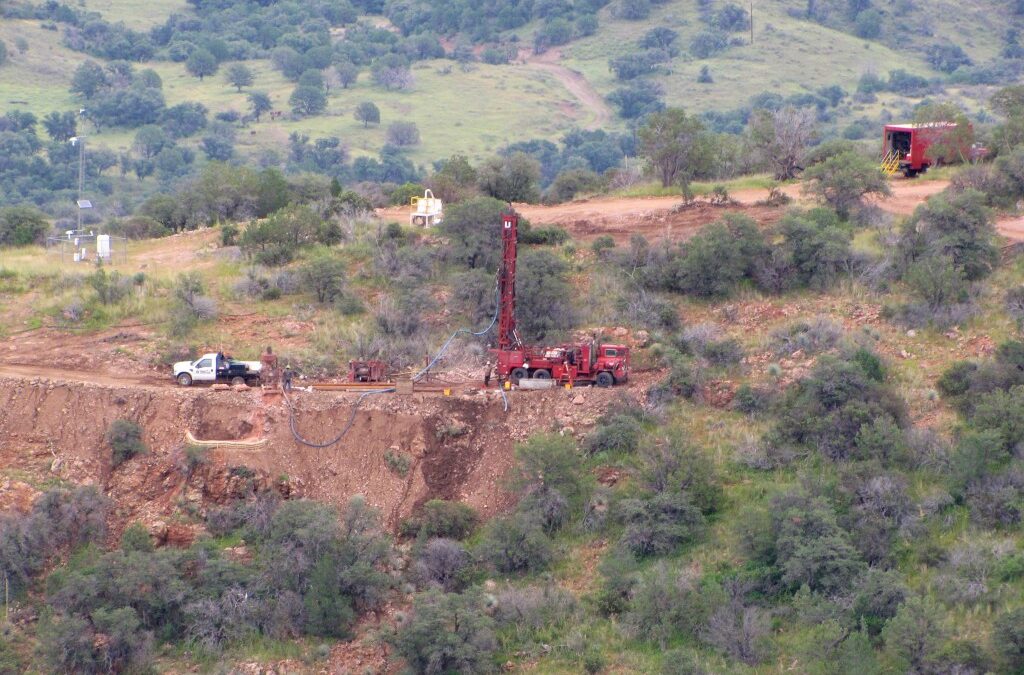
Jun 10, 2016 | Blog
The Price We Pay for the Mining Game, By Michael Stabile
A few years back Arizona Minerals, AKA Wildcat Silver, said they had discovered a great big silver deposit up in the Patagonia Mountains. They were going to recover over a million ounces of silver at a lower cost then any other silver mine in the country. They also had incredible amounts of manganese associated with the silver. They couldn’t say enough about their discovery. They did extensive exploratory drilling on their private landholdings to try and prove its value. They made two attempts to come onto public land for more exploration, but they backed down from both. Then there was silence; no more talk of the open pit silver mine. Was there a problem with the extraction of the silver from the manganese carbonate?
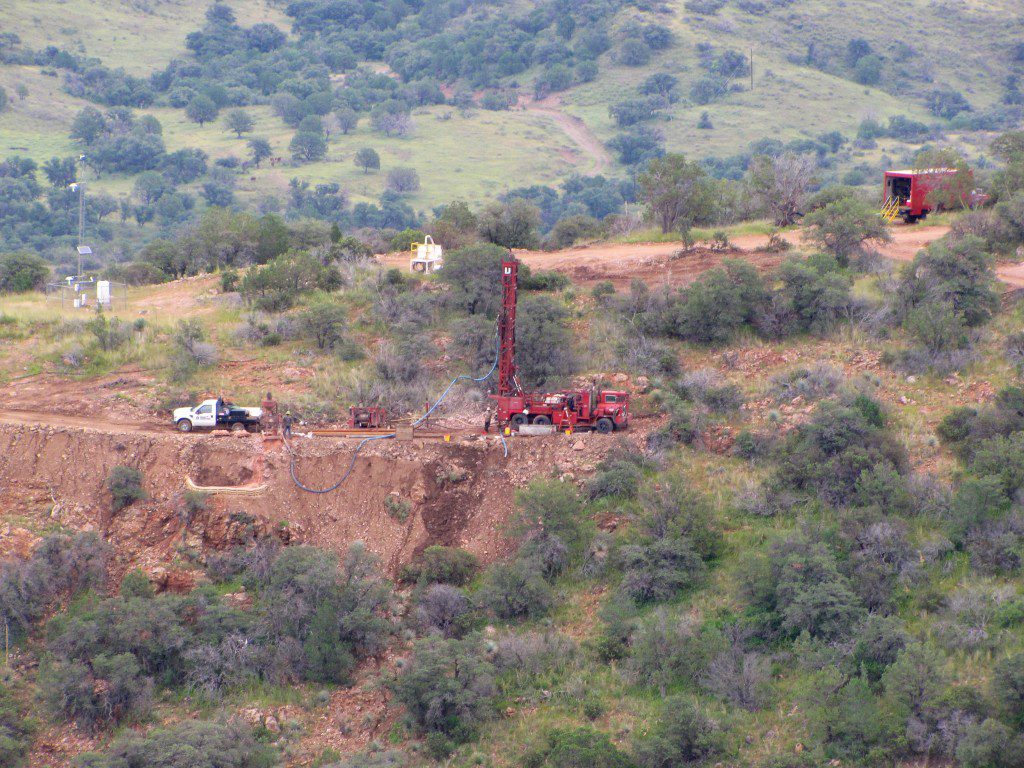
Wildcat Silver / AZ Mining Inc mineral drilling
That process was a difficult one, very dirty and not very productive. The cost of the project was estimated to be about $800,000,000 and water use approximately 1.5 billion gallons yearly. They still talk about the Hermosa project, originally called “Hardshell,” on their website, but have made no more effort to proceed with the mine plan.
Suddenly there was talk from people associated with Arizona Minerals about a new and better discovery: lead and zinc with some silver. This discovery was on land they purchased from the state, called the ASARCO Multi-State Environmental Custodial Trust. ASARCO was a mining company that operated here in Arizona, as well as other states, and went bankrupt and left behind a legacy of Superfund sites. Here in our neck of the woods ASARCO operated the Trench Mine which has been polluting the waters of Alum Gulch and Flux Canyon for years.
Arizona Minerals paid a price of under $100 for 300+ acres for the land — pretty cheap — but for such a low price, they are required to build a passive water control system to contain leaks from the old mine, which would cost upwards of two million dollars. They will also be responsible for any pollution that might escape the area. The new discovery is located on this land, 2,000+ feet below the surface. And in all their investor reports, they are not mentioning the cost of cleaning up the Trench Mine or the incredible costs of extracting minerals at great depth.
I recommend that concerned citizens of Patagonia drive up Harshaw Road and view the destruction that has taken place as Arizona Mining mounts an expedited drilling program to try and prove their discovery. They have closed down the Flux Canyon Road because it is now on their property. Turns out the Forest Service doesn’t have an easement from ASARCO or the state so anyone who wants to enjoy this area – birding, ATVing, hiking, hunting, etc. can no longer access this area.
My biggest concern, and something that should concern every resident of the area about Arizona Minerals, is that they control over 15,000 acres of public lands in the heart of Patagonia’s watershed and some of the most bio-diverse terrain in America. What can we do to protect this area from continued destruction? We the residents, who care about this special place, can make our voices heard. The last thing investors in these mining operations want to hear about is local opposition. This implies that the permitting process will be long, and any return on investment will take years. How do we make our voices heard? Contact state and local officials and state your concern for the watershed, the surrounding habitat where several endangered species live and thrive. Put signs in your yards stating opposition to the mine, We must protect Patagonia, a precious jewel that exists nowhere else in this great country of ours.
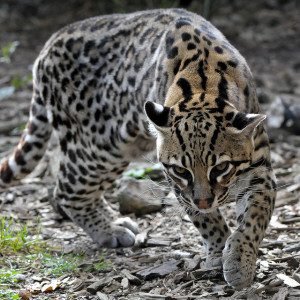
Sep 16, 2015 | Blog
FOR IMMEDIATE RELEASE
Contact: Courtney Sexton, csexton@defenders.org, 202-772-0253
Wendy Russell, wendy@patagoniaalliance.org, 520-477-2308
Federal court flips the off switch on Forest Service’s approval of “Sunnyside” project in Coronado National Forest
Tucson, Ariz. —A district court in Arizona put the brakes on an environmentally destructive exploratory drilling project in the Coronado National Forest near Patagonia, Arizona, saying the Forest Service failed to conduct the appropriate environmental review before fast-tracking the approval of the “Sunnyside” project. In October 2014 conservation groups Defenders of Wildlife and the Patagonia Area Resource Alliance (PARA) filed a lawsuit claiming the Forest Service’s approval violated environmental laws and posed a threat to endangered species in the area.
Statement from Rob Peters, Defenders of Wildlife:

Pictured: Ocelot by Steve Harris
“This is a great victory for the many species of imperiled wildlife that call the Coronado National Forest and the Mountain Empire region home, especially the jaguar, Mexican spotted owl, ocelot and yellow-billed cuckoo, all of which are already at risk from multiple projects in the region.
“The court’s ruling against this destructive mining operation is the best thing that could have happened for the residents of Patagonia and for the incredible and diverse wildlife in the area.”
Statement from Wendy Russell, Patagonia Area Resource Alliance:
“We’re not going to stand by and let the Forest Service rubber-stamp these mining projects in the Patagonia Mountains. There’s too much at stake for both our community and wildlife. This is the second time we’ve had to take them to court, and the second time we’ve won.”
Defenders and PARA were assisted in the case by Roger Flynn, an attorney with the Western Mining Action Project. Flynn noted the importance of local residents’ right to participate in the Forest Service’s review of mineral projects on public land – residents were excluded from this process in the fast-tracking of the approval, a violation of federal law.
Background:
The Canadian mining company Regal Resources’ Sunnyside Project (an exploratory mining operation) involves drilling six exploratory holes for copper deposits up to 6,500 feet deep roughly five miles from the town of Patagonia, Arizona. The Forest Service issued a “categorical exclusion” decision which essentially fast-tracked the mineral drilling exploration and approved the project without involving the public or taking a hard look at the project’s impacts to endangered species. The decision authorized Regal Resources to run its drill rigs for at least five months in sensitive endangered species’ habitat. Loud mineral drilling operations and construction would occur 24 hours a day, seven days a week (using artificial lighting at night) with total project operations and reclamation lasting up to three years.
In January of this year, the Forest Service temporarily withdrew approval for the Sunnyside project until it completed consultation with the U.S. Fish and Wildlife Service to determine whether the project would significantly affect the western yellow-billed cuckoo, which is listed as a federally threatened species. After completing the consultation and concluding that there would be no significant effects, the Forest Service re-issued its approval for drilling to proceed in April, 2015.
###
Defenders of Wildlife is dedicated to the protection of all native animals and plants in their natural communities. With more than 1.2 million members and activists, Defenders of Wildlife is a leading advocate for innovative solutions to safeguard our wildlife heritage for generations to come. For more information, visit www.defenders.org and follow us on Twitter @DefendersNews.
The Patagonia Area Resource Alliance is a citizen watchdog organization that monitors the activities of mining companies, as well as ensures government agencies’ due diligence, to make sure their actions have long-term, sustainable benefits to our public lands, our water, and the town of Patagonia. For more information visit www.patagoniaalliance.org and follow us on Twitter @PARAalliance.
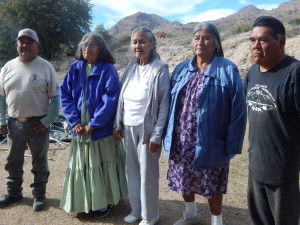
Apr 16, 2015 | Blog
FOR IMMEDIATE RELEASE
San Carlos, AZ – Tribal elders of the San Carlos Apache Tribe are geared up to join the Protect Oak Flat Street Fair that is slated for Sunday, April 19th in Tucson, in conjunction with Cyclovia Tucson, a car-free community celebration.

Apache Elders at Oak Flat
“We are Apaches and we never give up,” pointed out Anthony Logan, Holy Ground Medicine Man, in his native San Carlos Apache language. We are here in prayer and still occupying our sacred ancestral land. Creator God gave us this land to take care of and to continue our Holy Ground ceremonies.”
“We have a responsibility to take care of our sacred sites and we will be blessed for our sacrifices made on behalf of our Mother Earth. We are still here at Chi’Chil’Bilda’Goteel,” concluded Medicine Man Logan.
Apache Stronghold has maintained a continuous “occupation” of the proposed mine site since February 7th, 2015.
“We continue to stand up and advocate for our Apache way of life, what we believe and what we have been taught by our ancestors,” says Audrey Johnson, tribal elder, in her native San Carlos Apache language. “Oak Flat is known to us as Chi’Chil’Bilda’Goteel and our Apache people and other Indigenous Peoples from all over have been occupying our ancestral land there. We are still opposing the Southeast Arizona Land Exchange where Resolution Copper Company under Rio Tinto/BHP is proposing to build a $64.1 billion dollar mine at Oak Flat. One of the key players in this “land grab” is Arizona Senator John McCain. He appears to have no disregard to our Apache People and our way of life. Shame on him.”
“Our waters will be contaminated and our ancestral land will forever be destroyed and our ceremonial and holy sites and even burial sites and we want the world to know that we oppose such desecration by a foreign company,” concluded tribal elder, Audrey Johnson.
What: Protect Oak Flat Street Party
Where: 238 E. 26th street
When: Sunday, April 19th, 10am-3pm
Everyone is invited to join in the cause from 10:00 a.m. to 3:00 p.m. and for more information, contact Wendsler Nosie, Sr., at (928) 200-5045 or Sandra Rambler at (928) 951-6939. Or visit www.Apache-Stronghold.com
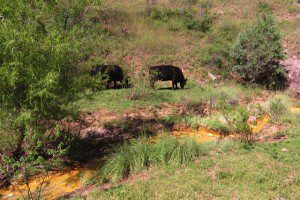
Feb 13, 2015 | Blog
FOR IMMEDIATE RELEASE
Regional Forester Issues Time Critical Removal Action Approval Memo
Patagonia, Arizona – Yesterday, the Southwestern Regional Office of the US Forest Service issued an Action Memo for “Time Critical” clean up of the abandoned Lead Queen mine in the Patagonia Mountains on the Coronado National Forest, approximately 6 miles south of the town of Patagonia, Arizona.
Members of the Patagonia Area Resource Alliance (PARA) discovered the abandoned mine over-flowing with toxic, orange sludge into a tributary of Harshaw Creek, last September. PARA documented the spill and notified authorities. The Harshaw Creek tributary eventually flows into the Town of Patagonia, Sonoita Creek and Patagonia Lake.
As the land owners of the Lead Queen mine, the Forest Service was issued two Notice of Violations from the Arizona Department of Environmental Quality: “Addition of a pollutant to navigable waters from a point source without a permit,” and “Discharge of storm water associated with an industrial activity without a permit.”
 Test results showed off-the-chart concentrations of lead and arsenic in water, soil and waste rock samples at the Lead Queen site. High concentrations of zinc, copper and aluminum were also found. All of these heavy metals are listed as “hazardous substances” and can cause serious – or even deadly – health issues. The red-orange color of the sludge was due to extreme concentrations of iron.
Test results showed off-the-chart concentrations of lead and arsenic in water, soil and waste rock samples at the Lead Queen site. High concentrations of zinc, copper and aluminum were also found. All of these heavy metals are listed as “hazardous substances” and can cause serious – or even deadly – health issues. The red-orange color of the sludge was due to extreme concentrations of iron.
The USFS document stated the clean up aims to reduce potential exposure of the hazardous heavy metals to “human populations, animals or the food chain.”
“This is a good start, but I’ve seen many more abandoned mines in the Patagonia Mountains that also need to be cleaned up. The mining industry has a well-earned reputation for just walking away from mines when they’re done.” Gooch Goodwin, native Patagonian and PARA board member.
 The Forest Service document also acknowledges that the “Patagonia Mountains have high levels of biodiversity and are home to a variety of species protected under the Endangered Species Act including jaguar, ocelot, lesser long-nosed bat, Mexican spotted owl, western yellow-billed cuckoo, Sonora tiger salamander, and the northern Mexican gartersnake.”
The Forest Service document also acknowledges that the “Patagonia Mountains have high levels of biodiversity and are home to a variety of species protected under the Endangered Species Act including jaguar, ocelot, lesser long-nosed bat, Mexican spotted owl, western yellow-billed cuckoo, Sonora tiger salamander, and the northern Mexican gartersnake.”
It additionally states, “the area is best-known and most popular places for birding in the U.S. Bird enthusiast who come from all over the world to catch a glimpse of more than 300 species of birds, including many Neotropical species that migrate, nest, and live in this unique habitat.”
Clean up of the five acre site is expected to start Spring 2015 and be completed before the coming monsoon season to avoid erosion and flushing of heavy metals further downstream.
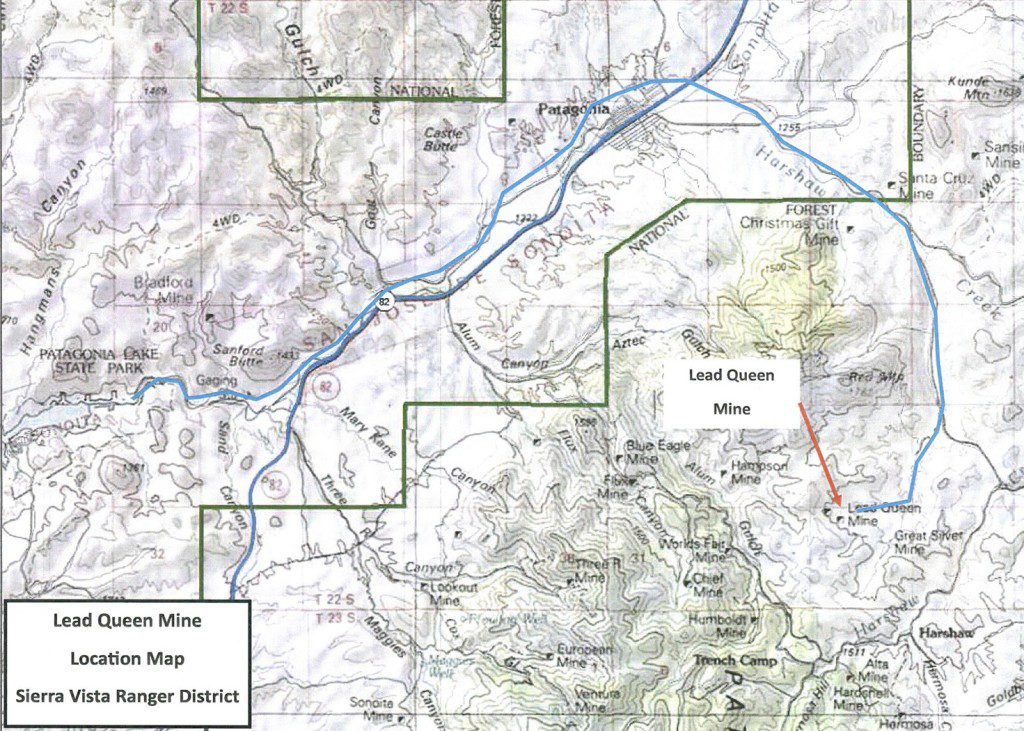
USFS map of Lead Queen mine location
Read USFS Lead Queen Mine Removal Action Memorandum
For further information regarding the USFS Removal Action Memorandum, please contact Eli Curiel, P.E., On-Scene Coordinator, at 520-388-8413; or Maria McGaha, P.E., Regional Environmental Engineer, at 505-842-3837.
###
The Patagonia Area Resource Alliance is a citizen watchdog organization that monitors the activities of mining companies, as well as ensures government agencies’ due diligence, to make sure their actions have long-term, sustainable benefits to our public lands, our water, and the town of Patagonia. For more information visit www.patagoniaalliance.org and follow us on Twitter @PARAalliance.

Jan 13, 2015 | Blog
FOR IMMEDIATE RELEASE
Plug Pulled on Proposed “Sunnyside” project in Arizona’s Coronado National Forest
Tucson, Ariz. — Today the U.S. Forest Service temporarily put the brakes on an environmentally hazardous mining project in southern Arizona’s Coronado National Forest that it previously approved in August. The Forest Service’s decision follows a similar move by the U.S. Fish and Wildlife Service, which had originally given the project the green light in August and then withdrew its approval in December. The agency decisions to withdraw their approvals of the Canadian mining company Regal Resources’ “Sunnyside Project” are based on the project’s potential violation of multiple environmental laws.

photo by Nathan Rupert
“The agencies knew from the beginning that this project could have a devastating impact on the local wildlife and habitat in this unique corner of the country,” said Rob Peters of Defenders of Wildlife. “The Coronado is home to an incredible diversity of imperiled species like the jaguar, ocelot and yellow-billed cuckoo, all which are already at risk from multiple projects in the region.”
“No one understood why they approved this project to begin with, but for the sake of Patagonia’s residents and wildlife, we are glad to see that they’ve reconsidered,” added Peters.
In October conservation groups Defenders of Wildlife and the Patagonia Area Resource Alliance filed a lawsuit claiming the federal agencies’ approvals the Sunnyside project violated environmental laws and posed a threat to endangered species and the safety of drinking water for local residents.
“Sunnyside could have been a disaster not only for our region’s unique wildlife, but also for the residents living directly downstream and the municipal watershed of the town of Patagonia,” said Wendy Russell of the Patagonia Area Resource Alliance. “Projects like Sunnyside use and abuse a tremendous amount of the local water supply and create long-term destruction of wildlife habitat. The people and wildlife of our national forests deserve more, and the agencies know that.”
Click to hear from environmental attorneys on why they sue.
###
Contact: Courtney Sexton, csexton@defenders.org, 202-772-0253
Wendy Russell, wendy@patagoniaalliance.org, 520-477-2308
Defenders of Wildlife is dedicated to the protection of all native animals and plants in their natural communities. With more than 1.1 million members and activists, Defenders of Wildlife is a leading advocate for innovative solutions to safeguard our wildlife heritage for generations to come. For more information, visit www.defenders.org and follow us on Twitter @DefendersNews.
The Patagonia Area Resource Alliance is a citizen watchdog organization that monitors the activities of mining companies, as well as ensures government agencies’ due diligence, to make sure their actions have long-term, sustainable benefits to our public lands, our water, and the town of Patagonia. For more information visit www.patagoniaalliance.org and follow us on Twitter @PARAalliance.
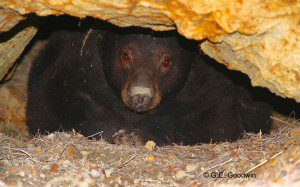
Dec 28, 2014 | Blog
The AZ Mining Inc (Wildcat Silver) Hermosa drilling project timeline was just pushed back–now almost a full year behind the previous schedule. We couldn’t have planned a better holiday gift! The release of the Hermosa Environmental Assessment (EA) and Draft Decision is now estimated for July 2015, which would then trigger a 45 day deadline for objections. If you commented on the Hermosa project, you will be able to participate in the objection process. PARA has successfully delayed AZ Mining Inc / Wildcat Silver–and all other mining companies–from drilling on public land in the Patagonia Mountains since 2011.
Your Gift is Helping to Save Wildlife and Water in Patagonia!

Save my home in the Patagonia Mountains. ©Gooch Goodwin
Billie the Black Bear makes her home in the Patagonia Mountains. Open pit mining would destroy her home and the water that we all depend upon. Your gift to the Patagonia Area Resource Alliance empowers us to keep new mining activity off of public land in the Patagonia Mountains–successfully since 2011!
Read more about our most recent Activities and Accomplishments.
Your donations also make it possible for us to organize community involvement and action so that we can protect the Patagonia Mountains, wildlife and habitats, our waterways and our communities.
Please consider making a donation to PARA this year to support and grow this critical work in the Patagonia Mountains: patagoniaalliance.org/donations/
A big thank you to everyone who has already donated this year!
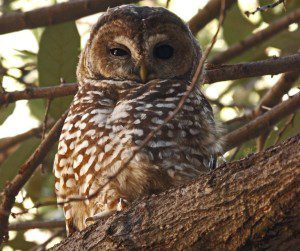
Mexican Spotted Owl © Glen E Goodwin
PARA Taking Action
The Forest Service approved the Sunnyside mineral drilling proposal by Regal Resources in the Patagonia Mountains, even though it directly threatens the imperiled Mexican spotted owl in the most sensitive area of their habitat–their roosting and nesting areas. As a result, we filed suit in federal court with Defenders of Wildlife for that unlawful approval, which violates environmental laws and poses potential threats to additional endangered species and the safety of drinking water for local residents.
Even More Good News: Thank You PARA Supporters!
We are very fortunate to have a group of amazingly committed community members and generous donors supporting our work.
We’ve just exceeded our year-end goal of raising $19,000! We on our way to reaching our entire 2015 operating budget. Thank you!
The work necessary to keep mining out of the Patagonia Mountains a reality is only possible because of your financial support.
Consider making an automatic, monthly donation to PARA on your credit card through PayPal.
Every single contribution makes a sizable difference to our organization and ultimately for our community.
It is only because of the generous support from people like you that we can undertake this critical work. Thank you!

Nov 26, 2014 | Blog
It’s hard to believe that the end of the year is nearly upon us! When 2014 began, your friends, neighbors and colleagues here at the Patagonia Area Resource Alliance (PARA) were gearing up for a busy year promoting the incredible beauty, community, and natural heritage of the Town of Patagonia and the Patagonia Mountains. Little did we know what a whirlwind year it would be! The past eleven months have seemingly sped by while we have been advocating to protect this amazing place that we all treasure from the multiple threats that exploratory drilling and mining pose to our small community.
PARA was formed in 2011 to educate and engage the community about the risks and realities of mining, to promote local sustainable economies, to better understand our precious and imperiled natural resources such as clean water and wildlife, and to actively advocate for the protection of those resources in concert with Patagonia’s distinct and serene rural way of life.
You have helped us along the way this year! You have volunteered, come to public meetings, wrote letters, monitored wildlife, and participated in the NEPA process. Together, we have contributed over 2500 volunteer hours already in 2014!
It has been another amazing and transforming year for PARA, but we have so much more to do! PARA runs on a shoestring budget with the human power of an almost entirely volunteer workforce and our two person outreach team–budgeted for only 30 hours per week. We’d like to do so much more! Please consider making a donation to PARA this year to support and grow this critical work in our community.
A few of the activities and accomplishments reached this year through the contributions of all of PARA’s supporters, volunteers and partners:

Ocelot, Leopardus pardalis. photo US FWS
Holding Agencies Accountable
Filed a complaint in federal court in October with Defenders of Wildlife against the Forest Service and the Fish and Wildlife Service for their unlawful approval of the Regal Resources Sunnyside mineral drilling project in southern Arizona’s Coronado National Forest, in the Alum Gulch area of the Patagonia Mountains. The Sunnyside project approval violates environmental laws and poses a potential threat to endangered species and the safety of drinking water for Patagonia area residents. The Coronado National Forest, Patagonia Mountains and waterways in our region support some of the world’s most imperiled wildlife, including jaguar, ocelot, lesser long-nosed bat, Mexican spotted owl, and yellow-billed cuckoo.
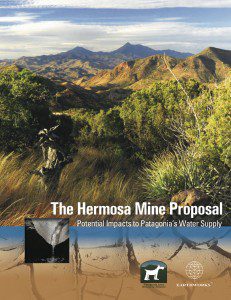 Educating the Community on Mining Risks
Educating the Community on Mining Risks
Released a peer-reviewed report with the national organization EARTHWORKS, “The Hermosa Mine: Potential Impacts to Patagonia’s Water Supply.” The report uses geologic and hydrologic studies from mine developer AZ Mining Inc (Wildcat Silver), the United States Geologic Survey, the Arizona Department of Water Resources, the Town of Patagonia, and others, as well as analyzes historic contamination issues caused by mining in the Patagonia Mountains. We conclude in our report that the seemingly inescapable realities of acid drainage and water consumption impacts pose too great a risk to Patagonia.
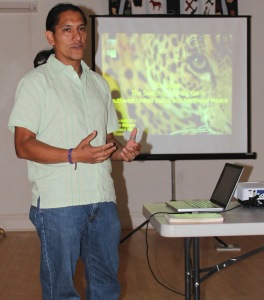
SIA Biologist, Sergio Avila
Empowering the Community, Ensuring Due Diligence
Coordinated and submitted NEPA comments on the USFS draft Environmental Assessment for the AZ Mining Inc (Wildcat Silver) Hermosa drilling project with Defenders of Wildlife, Arizona Mining Reform Coalition, Center for Biological Diversity, Earthworks, and Sky Island Alliance. Hosted a community workshop to empower residents to comment on the Hermosa EA comprising of an overview of the Hermosa proposal and its likely impacts; a NEPA presentation and how to comment on an EA by Jenny Neeley, Attorney at Law; and a presentation of area wildlife by Biologist, Sergio Avila, of Sky Island Alliance.
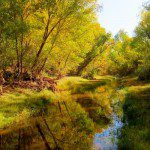
Sonoita Creek
Tireless Advocacy for Patagonia Area Water and Wildlife
Submitted comments regarding the proposed United States Forest Service Guidelines on Groundwater, advocating for groundwater protection and consideration of potential impacts regarding all agency activities in our National Forests, especially in regards to hardrock mining. Submitted comments to the Environmental Protection Agency regarding the proposed rule defining the “Waters of the U.S.” advocating for protection of ephemeral and intermittent streams. Submitted comments advocating for more designated critical habitat in the Patagonia Mountains for the threatened yellow-billed cuckoo.
To learn more about our 2014 accomplishments and efforts, please take a look at PARA’s “Report to the Community” available on our website at: www.patagoniaalliance.org/our-activities- outreach/
Looking Ahead…
Unceasing Protection of the Patagonia Mountains.
With continued legal assistance from Defenders of Wildlife, PARA strives to hold mining companies, the US Forest Service and all agencies accountable to follow the laws and regulations designed to protect our water, air, surrounding ecosystems and communities. We are positioned to respond to future exploratory mining proposals scheduled for the Patagonia Mountains.
Sustaining Wildlife Data Documentation and Collaborations
Citizen scientists from the community continue wildlife monitoring efforts in the Patagonia Mountains focusing on areas immediately at risk by proposed mining activities. Data gathered is used to fight mining proposals through species lists, presence of vulnerable species and habitat analysis. Additional collaborations are ongoing with Defenders of Wildlife, EARTHWORKS, Sky Island Alliance and Tucson Audubon to ensure this data is applied to advocacy efforts in the most effective ways.
Increasing Our Outreach for 2015
PARA is strategizing to expand community education activities to grow our base of support and empower concerned residents with potential actions to keep mining out of the Patagonia Mountains. We recognize the need to establish sustainable funding to maintain core functions and seek to expand funding sources. With our additional staff funding in the 2015 budget, we plan to sustain our two person team to continue to expand our outreach beyond our community boundaries. Our 2014 Financial Report is also available online: www.patagoniaalliance.org/our-activities-outreach/
For A Thriving Community in 2015 and beyond
PARA recognizes that the health and economic prosperity of our community are deeply connected to the well-being of the Patagonia Mountains and the Harshaw/Sonoita Creek watershed. They are the source of our drinking water, clean air and the centerpieces that drive our local economy.
Please make a Year-End Gift to PARA
There are many needs in our community and many compelling requests for support. We believe one of the most fundamental is protecting our drinking water and our community from the well-known detrimental effects of open pit mining. To that end, PARA is seeking to raise $19,000 by the end of 2014 to support the several ongoing and new initiatives outlined above as we move into 2015. We are fortunate to have a group of amazingly committed community members and generous donors supporting our work, but we are looking to broaden the base of support to ensure not only financial sustainability, but also the ability to impact local, regional and national decision-making on our own behalf.
That’s where you come in. The work necessary to make this vision of 2015 a reality is possible only because of your time and your financial support. Please make a gift today.
Recurring monthly donations can be made securely through PayPal.
Every single contribution makes a sizable difference to our organization and ultimately for our community. It is only because of the generous support from people like you that we can undertake this critical work. Thank you!
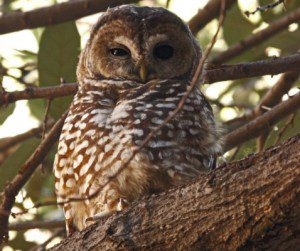
Oct 29, 2014 | Blog
FOR IMMEDIATE RELEASE
October 29, 2014
Contact: Courtney Sexton, csexton@defenders.org, 202-772-0253
Wendy Russell, wendy@patagoniaalliance.org, 520-477-2308
Groups file complaint against Forest Service and Fish and Wildlife Service for approval of mineral drilling project in Arizona’s Coronado National Forest
TUCSON, ARIZ. – Defenders of Wildlife and the Patagonia Area Resource Alliance today asked a federal court to hold the United States Forest Service and United States Fish and Wildlife Service accountable for their unlawful approval of the “Sunnyside” mineral exploration drilling project in southern Arizona’s Coronado National Forest, in the Alum Gulch area of the Patagonia Mountains. The groups say the approval of the Canadian mining company Regal Resources’ Sunnyside Project violates environmental laws and poses a potential threat to endangered species and the safety of drinking water for local residents. The Sunnyside Project involves drilling multiple exploratory holes up to 6,500 feet deep in one of the most biologically diverse mountain ranges in Arizona. The extensive drilling and construction would run 24/7 for months on end, and the total project operations could last up to 3 years.

Mexican spotted owl, ©Gooch Goodwin
The Coronado National Forest, the Patagonia Mountains and the watersheds in this region support some of the world’s most imperiled wildlife, including the jaguar, ocelot, lesser long-nosed bat, Mexican spotted owl, and yellow-billed cuckoo. Of particular concern is the Mexican spotted owl “Protected Activity Center” (PAC) in the Alum Gulch area, a site which is supposed to have the greatest protection of the law. One of the project’s proposed drilling sites is only one-tenth of a mile from the “nesting core area” of this PAC.
“The potential damage from the Sunnyside Project, especially coupled with other damaging mining projects in the region, could have devastating impacts on this imperiled wildlife and the habitat they depend on, as well as the water supply for local residents,” said Rob Peters of Defenders of Wildlife. “This is a national forest and imperiled wildlife and their habitats on the forest should be protected— not polluted by expanded drilling operations.”

Ocelot, Leopardus pardalis. photo US FWS
Patagonia area residents are dependent on water originating from Alum Gulch, an area which is also designated as critical habitat for the jaguar and Mexican spotted owl. The imperiled ocelot, lesser long-nosed bat, and yellow-billed cuckoo have also been observed near the project area.
“The Sunnyside Project could have tremendous adverse impacts on local wildlife and local residents, affecting the floodplains and the municipal watershed of the town of Patagonia,” said Wendy Russell of the Patagonia Area Resource Alliance. “The drilling will require 12,500 gallons of water per day, an amount approximately equal to ten percent of the daily water usage of the Town of Patagonia. This project threatens not only endangered wildlife, but our community’s water, health and safety.”
Click to hear from environmental attorneys on why they sue.
###
Defenders of Wildlife is dedicated to the protection of all native animals and plants in their natural communities. With more than 1.1 million members and activists, Defenders of Wildlife is a leading advocate for innovative solutions to safeguard our wildlife heritage for generations to come. For more information, visit www.defenders.org and follow us on Twitter @DefendersNews.
The Patagonia Area Resource Alliance is a citizen watchdog organization that monitors the activities of mining companies, as well as ensures government agencies’ due diligence, to make sure their actions have long-term, sustainable benefits to our public lands, our water, and the town of Patagonia. For more information visit www.patagoniaalliance.org and follow us on Twitter @PARAalliance.
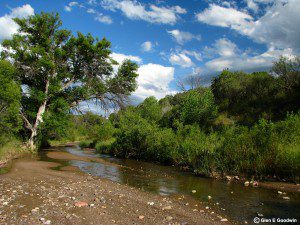
Oct 28, 2014 | Blog
Peer-reviewed report outlines Hermosa mine’s risks of water consumption, perpetual water pollution to Patagonia area
Patagonia Area Resource Alliance
Earthworks
October 28, 2014
 Patagonia – The Hermosa silver mine proposed inside Patagonia, Arizona’s Municipal Supply Watershed could deplete the town’s drinking water and perpetually contaminate area groundwater with acid mine drainage, according to a new peer-reviewed report.
Patagonia – The Hermosa silver mine proposed inside Patagonia, Arizona’s Municipal Supply Watershed could deplete the town’s drinking water and perpetually contaminate area groundwater with acid mine drainage, according to a new peer-reviewed report.
Reviewed* by a USGS scientist and released by the Patagonia Area Resource Alliance and Earthworks, the study also concludes that drinking water wells of surrounding residents are also threatened.
“A mine that threatens our town’s drinking water is a mine that shouldn’t be built,” said Wendy Russell of the Patagonia Area Resource Alliance. She continued, “In Arizona, water is more precious than silver, and especially so after more than a decade of drought.”
Proposed by Canadian exploration company AZ Mining Inc (Wildcat Silver) – a company with no experience operating a mine – Hermosa is proposed at a time when Patagonia is already concerned with dropping groundwater levels and increasing concern about future water supplies.
The 4,000 foot wide and 1,500 foot deep Hermosa silver and manganese mine would consume 670 million to 1.2 billion  gallons of groundwater per year – up to 53 times the amount of water the town uses today — to run the mine within the upper reaches of Harshaw Creek, a portion of Patagonia’s Municipal Supply Watershed. This water consumption will lower the recharge rates for the aquifer on which the town depends, and is also likely to produce acidic runoff, requiring ongoing treatment in perpetuity.
gallons of groundwater per year – up to 53 times the amount of water the town uses today — to run the mine within the upper reaches of Harshaw Creek, a portion of Patagonia’s Municipal Supply Watershed. This water consumption will lower the recharge rates for the aquifer on which the town depends, and is also likely to produce acidic runoff, requiring ongoing treatment in perpetuity.
“If the U.S. Forest Service were to permit the Hermosa mine, this report shows it would jeopardize our community’s drinking water. And for what? For foreign shareholders’ silver,” said Wendy Russell. She continued, “This is a mine proposal that just doesn’t make sense for our community who would actually have to live with it.”
The mine is proposed within the Coronado National Forest, and therefore subject to the 1872 Mining Law. Federal land managers interpret the 1872 Mining Law to require them to permit mines, no matter if the land is better used for other purposes – like protecting a town’s drinking water supply watershed.
“Because the Hermosa mine proposal threatens area water supplies, it obviously should not be permitted,” said report author Pete Dronkers of Earthworks. He continued, “That it’s being considered at all is a strong argument for reforming the 1872 Mining Law to allow the consideration of other potential land uses.”
The report also evaluates the nature of groundwater depletion that is likely under the proposed mine plan, characterizes the impacts of such, and also analyses other known adverse impacts, such as air pollution, endangered species, and other cumulative impacts.
The report, including an executive summary, can be found at: patagoniaalliance.org/report-hermosa-mine
For more information:
Fact Sheet
Full Report
Contact:
Pete Dronkers, Earthworks
(775) 815-9936, pdronkers@earthworksaction.org
Wendy Russell, Patagonia Area Resource Alliance
(520) 477-2308, wendy@patagoniaalliance.org
* An earlier version of this press release indicated that a USGS scientist “endorsed” this report. We were informed by the United States Geological Survey that the agency only endorses their own reports and documents.
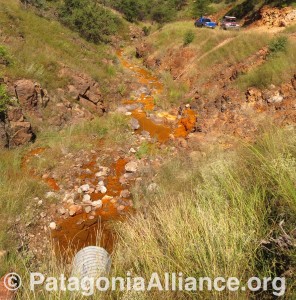
Sep 26, 2014 | Blog
FOR IMMEDIATE RELEASE
Contact: Courtney Sexton, 202.772.0253, csexton@defenders.org
Wendy Russell, 520.477.2308, Wendy@PatagoniaAlliance.org
Toxic Mining Contaminants Threaten People and Wildlife in Arizona

Bright orange water overflowing from the historic Trench mine, twice reclaimed by Asarco and now owned by the State of Arizona.
TUCSON, ARIZ. – Contaminants from a mine spill in Cananea, Sonora earlier this summer have likely reached the San Pedro River flowing into Arizona. And with recent storms, old copper and silver mine sites near Patagonia are leaking bright red contaminants into local streams. These toxic reminders of our mining history have the potential to wreak havoc on local water supplies and wildlife in the Coronado National Forest, one of the most biologically diverse areas in the world.
“The Coronado National Forest, the “Sacred” Santa Ritas, the San Pedro River Valley, the Patagonias and all of the Sky Islands nourish some of the most incredible and endangered biodiversity in the world, including jaguars, ocelots, yellow-billed cuckoos and Gila topminnows,” said Eva Sargent, director of Southwest Programs for Defenders of Wildlife. “This is a place that must be conserved, not a place for the destructive practice of mining and its toxic byproducts that ruin our public landscapes and pollute our waters.”
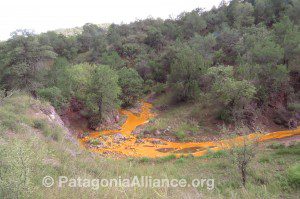
Toxic overflow from the historic Lead Queen mine in the Patagonia Mountains drains towards Harshaw Creek.
“All this toxic runoff is a prime example of why new mines should not be approved in the mountains of southern Arizona,” added Wendy Russell of the Patagonia Area Resource Alliance. “There are already approximately 130 abandoned mines in the Patagonia Mountains, many with eroding tailings and leaking tunnels discharging toxins. With heavy rainfall, that toxic discharge overflows into water systems like Harshaw Creek and Alum Gulch in the Santa Cruz watershed and threatens both local communities’ drinking water and already endangered fish and wildlife. With the state and federal governments seemingly incapable of cleaning up old polluting mines in the Patagonia Mountains, we have no confidence in their abilities to regulate new mining activity to protect our community’s drinking water, health and safety.”
Interviews with local experts regarding abandoned mine overflows in the Patagonia Mountains of southern Arizona in September, 2014.
###
Defenders of Wildlife is dedicated to the protection of all native animals and plants in their natural communities. With more than 1.1 million members and activists, Defenders of Wildlife is a leading advocate for innovative solutions to safeguard our wildlife heritage for generations to come. For more information, visit www.defenders.org<http://www.defenders.org/> and follow us on Twitter @DefendersNews<http://twitter.com/DefendersNews>.
The Patagonia Area Resource Alliance is a citizen watchdog organization that monitors the activities of mining companies, as well as ensures government agencies’ due diligence, to make sure their actions have long-term, sustainable benefits to our public lands, our water, and the town of Patagonia. For more information visit www.patagoniaalliance.org<http://www.patagoniaalliance.org>
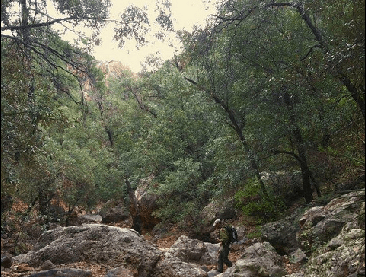
Sep 10, 2014 | Blog

Sierra Vista District Ranger Mark Ruggiero signed a Decision Memorandum (DM) for the Regal Resources Sunnyside exploratory mineral drilling project granting them a Categorical Exclusion and allowing a September 2014 start date. The project is located on the Coronado National Forest in Humboldt Canyon in the Patagonia Mountains and 6 miles south of the town of Patagonia, Arizona.
The Decision Memo followed a second round of scoping initiated in July 2013. “Seventy-eight comments were received during the 2013 30-day scoping period,” according to a August 28 email issued by CNF Geologist Patrick Morton. Scoping for this project also occurred in 2011. The Forest Service considered these prior comments for their analyses as well.
A Categorical Exclusion project is considered to NOT have a significant impact, either individually or collectively. It’s a category that is exempted from the National Environmental Policy Act (NEPA) requirements to prepare an Environmental Assessment or Environmental Impact Statement both of which would analyze potential impacts of a proposal.
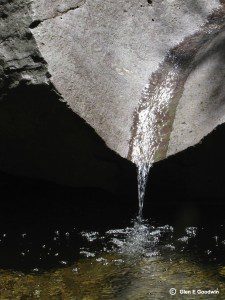
The potential negative effects that the Sunnyside drilling would have on the proposed Town of Patagonia Municipal Supply Watershed was one of the issues that raised by the Patagonia Area Resource Alliance. The Decision Memo (DM) states, “…the Town of Patagonia municipal supply may be affected. Due to the relatively limited duration and scale of the project, quantitative scientific studies have not been performed by the Forest Service regarding the water supply for the project and the possible effects to the town.” The DM concludes, “since the location of the water supply is unknown, the water supply of the Town of Patagonia may be totally unaffected as the supply source may be drawn from an entirely different groundwater basin.” We find this conclusion absurd.

Mexican Spotted Owl © Glen E Goodwin
PARA also submitted concerns about the Sunnyside drilling project’s effects on endangered species and their habitat. The DM stated that the Biological Assessment and Biological Evaluation determined that the drilling “‘may affect, not likely to adversely affect’ for jaguar, ocelot, lesser Long-nosed bat, and Mexican spotted owl.” The mineral drilling project is located in protected critical habitat for both the jaguar and the Mexican spotted owl.
Absent from the DM was any commentary on cumulative impacts in regards to Wildcat Silver’s Hermosa drilling proposal, other drilling proposals, other activity in the Patagonia Mountains, or ongoing drought conditions.
Regal Resources must post receipt of a reclamation bond, submit a final Plan of Operation with mitigations as required by the DM, and provide an approved spill response plan before their exploratory drilling can begin. Additionally, a September 3rd press release issued by Regal Resources begs the question if they even have the finances to start their exploratory drilling.
There is no objection period offered by the Forest Service for Categorical Exclusion (CE) decisions. CE decisions are final. Any appeals or objections must be addressed through litigation.
Questions about the Sunnyside drilling project should be directed to: Patrick Morton, Geologist, Coronado National Forest, 300 W. Congress St., Tucson, AZ 85701, 520-388-8348, pmorton@fs.fed.us.

Aug 8, 2014 | Blog

Save the Scenic Santa Ritas Media Release
August 8, 2014
Environmental Catastrophe in Canada Underscores Rosemont Threats
(TUCSON, Ariz.) The international engineering firm that designed a Canadian mine tailings dam that collapsed earlier this week is also playing a key role in the development of the proposed Rosemont Copper Mine’s tailings dump.
Monday’s catastrophic failure of Imperial Metal’s Mount Polley tailings dam sent millions of gallons of toxic slurry laden with heavy metals and other pollutants gushing into waterways approximately 370 miles northeast of Vancouver, BC. 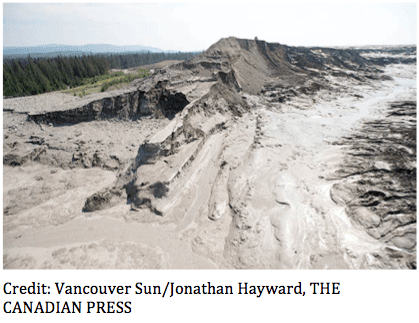
The Mount Polley environmental catastrophe has resulted in an emergency ban on drinking water, devastation of important salmon habitat and damage to the region’s tourism and outdoor economy. The costs of cleaning up the environmental damage are unknown, but the stock market apparently believes it will be significant, as Imperial Metals share price has dropped by over 40% since the incident occurred on Monday.
Knight Piésold Ltd. had provided Imperial Metals with design, construction supervision, quality control, and annual inspections of the failed Mount Polley tailings facility, according to Canadian regulatory filings.
In Arizona, Knight Piésold conducted laboratory testing on materials that would be used in Rosemont’s proposed tailings facility as a subcontractor for AMEC Earth & Environmental, Inc., which prepared the final design report for Rosemont’s dry stack tailings storage facility in April 2009.
AMEC also relied on Knight Piésold in 2010 to conduct analysis of soil materials in response to questions from the Arizona Department of Environmental Quality after it determined that the previous “assessment of physical and engineering properties of the dry stack tailings…is inadequate.”
“What happened in Canada this week is a reminder that, notwithstanding the PR spin from mining companies, the worst case scenario can and does happen,” said Gayle Hartmann, President of the Save the Scenic Santa Ritas. “While there may be some differences in the design, if even a fraction of the devastation that occurred in Canada were to take place at the proposed Rosemont mine, the drinking water supplies of a metropolitan area of 1 million people would be impacted not to mention the destruction of important desert riparian habitat.”
Potential incidents such as what occurred at the Mount Polley mine are the basis for SSSR’s repeated calls for the relevant regulatory agencies to do their job and reject the proposed Rosemont Mine because the risks to southern Arizona’s water supplies and economy are just too great. Earlier this year, a diverse group of organizations and individuals, including Save the Scenic Santa Ritas, Pima County, the Tohono O’odham Nation and Pascua Yaqui Tribe, and the Arizona Game and Fish Department, filed comprehensive written objections with the Forest Service on its final environmental analysis for the proposed mine.
Their objections raised a number of critical issues that, in light of the disaster in Canada, are even more relevant and significant today. These objections respond to the failure of the Forest Service to address the unmitigated toxic pit lake that will be created, accepting Rosemont’s and its engineers unproven assurances about the technical feasibility of its dry stack tailings which have never been used on a mine the size of Rosemont, allowing potential violations of the Clean Water and Clean Air acts and failing to set a specific amount for a reclamation bond that would clean up environmental disasters such as what occurred at Mount Polley.
“Given the revelation that the engineering firm that was involved in designing the failed tailings facility in Canada was also involved in the design of the Rosemont facility, the Forest Service must reverse its rubber stamp approval of the mine and along with the other regulatory agencies, reject the Rosemont mine to ensure that what happened in Canada will not happen here,” Hartmann said. “There are some places that should not be mined and the Santa Rita Mountains are just such a place. ”
Save the Scenic Santa Ritas is a non-profit, community organization working to protect the Santa Rita and Patagonia Mountains from environmental degradation caused by mining and mineral exploration activities. For more information, go
to ScenicSantaRitas.org or RosemontMineTruth.com.
For media coverage of the Mount Polley Mine:
Vancouver Sun
CBC News
CTV News
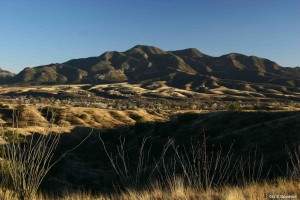
May 1, 2014 | Blog
By Carolyn Shafer
It is critical that we as individuals, our governing bodies and our community organizations mindfully support existing businesses and invite new business activity that will create a stable and sustainable economy and provide livelihood to all who are willing to work. Let’s first consider some historical and economic information.
The longest lasting local economic activity in the Patagonia area during the last four centuries has been ranching, a part of the economy even now. As prospecting in the 19th and 20th centuries found major mineral deposits, there has also been two boom-and-bust periods of mining, from about 1860-1910 and again in the middle 20th century. The last mine near Patagonia closed in 1965.
 In the 50 years since the last mining bust, the community has rebuilt its local economy based on ranching, tourism, local food production and recreational amenities (birding, hunting, camping, cycling, hiking, etc).
In the 50 years since the last mining bust, the community has rebuilt its local economy based on ranching, tourism, local food production and recreational amenities (birding, hunting, camping, cycling, hiking, etc).
How did the local economy perform under the industrial based economy (predominantly mining) and under the service based economy (predominantly tourism)? A review of all available Town of Patagonia financial audits (1963-2013) helps quantify a half century of economic transformation for the Town of Patagonia. Sales tax revenue is one measurement of the town’s financial health. In 1963, the Town’s sales tax revenues in comparable 2013 dollar value was $54,311 (actual revenue was $7,191). In 2013, the Town’s sales tax revenue was $197,540. The service based economy (predominantly tourism) in 2013 provided 364% more sales tax revenue than the predominantly mining industrial based economy. Another measure of the town’s health is population, the town’s population grew from 540 in 1960 to 913 in 2013 – a growth of 69% under the service based economy.
I am one of the owners of the local artists gallery. Our business represents more than 40 area artists. 85% of our business is from visitors to the Patagonia Mountains who come here to enjoy birding, hunting, camping, cycling, hiking and other outdoor recreational activities. I believe that my business and almost all of the existing businesses will be destroyed as the result of new mining in our mountains. The existing, local jobs that will be lost will exceed any mining jobs that might be created for local people. Yes, there is a history of mining in this area. I know that there are families in our community who were part of that mining tradition. Historic mining put food on the table and provided a living for many local families. Those historic mines and jobs are of an entirely different time and place than would exist with today’s mining practices.
What can we as a community do now to proactively create a stable local economy? I propose that we create a discussion group that includes all businesses as well as community organizations and interested individuals. A few of the topics include a look at the factual information available about the current employment situation, the history of this area’s economic stability and success under both the industrial and the service based economies, discussions about how we can support our existing businesses, and determine how we attract new businesses that will contribute to this thriving, resilient community. I hope to enlist local business owners and community organizations to participate in such a discussion so that we can work together as a community to establish a plan that truly perpetuates a strong and sustainable economy. I will first reach out to the Patagonia Area Business Association and the newly formed Patagonia Regional Business Coalition as two organizations that represent various business interests in the community.
Please share your suggestions for economic development and local employment. My contact information is in the Country Connection.
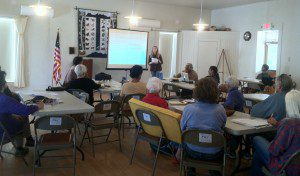
Mar 27, 2014 | Blog
PARA, Jenny Neeley and Sergio Avila from Sky Island Alliance teamed up again to host a NEPA comment workshop at Cady Hall in Patagonia on March 26, 2014. Discussed were the potential issues of the Forest Service’s Draft Environmental Assessment of the AZ Mining Inc / Wildcat Silver / Arizona Minerals Hermosa mining exploration proposal and how to comment effectively on it.
 Jenny Neeley reprised her role as our National Environmental Policy Act (NEPA) expert for tips on filing public comments on the Hermosa draft Environmental Assessment (EA) released by the Coronado National Forest. The purpose of an Environmental Assessment is to determine whether the impacts of a project will be significant. The goal for our comments on the draft EA is to demonstrate that the Hermosa project impacts will be significant so that the Forest Service conducts a more detailed and comprehensive Environmental Impact Statement. Read more tips for writing comments here.
Jenny Neeley reprised her role as our National Environmental Policy Act (NEPA) expert for tips on filing public comments on the Hermosa draft Environmental Assessment (EA) released by the Coronado National Forest. The purpose of an Environmental Assessment is to determine whether the impacts of a project will be significant. The goal for our comments on the draft EA is to demonstrate that the Hermosa project impacts will be significant so that the Forest Service conducts a more detailed and comprehensive Environmental Impact Statement. Read more tips for writing comments here.
PARA board member Cliff Hirsch gave a summary of the expected activities proposed by the AZ Mining Inc / Wildcat Silver / Arizona Minerals Hermosa exploratory drilling project located 6 miles southeast of the Town of Patagonia. The project activities encompasses 7350 acres of both Coronado National Forest and private land. It is also expected to use 3,525,800 gallons of groundwater pumped from within the Town of Patagonia Municipal Supply Watershed. Click here for talking points and Hermosa project summary.

SIA Biologist, Sergio Avila
SIA biologist Sergio Avila discussed the amazing biodiversity found in the Patagonia Mountains during the Bioblitz event conducted in April 2013. View the Bioblitz report here. The results from the Bioblitz and the ongoing wildlife tracking in the Patagonia Mountains demonstrate the importance of the Patagonias as a wildlife corridor and biological hotspot in the sky island mountain ranges of southern Arizona and northern Mexico. Click for a list of Federally Threatened, Endangered and Sensitive Species in the Patagonia Mountains of the Coronado National Forest in southern Arizona.
The Hermosa draft Environmental Assessment is available at the Patagonia Public Library and online at the Forest Service website on the Hermosa project page: http://www.fs.fed.us/nepa/nepa_project_exp.php?project=41158.
Thank you everyone for your participation. The Forest Service received 200 public scoping comments on the Hermosa Plan of Operation. Let’s send them 200 more on the draft EA! Deadline to submit comments is Friday, April 11, 2014.
Additional Resources:
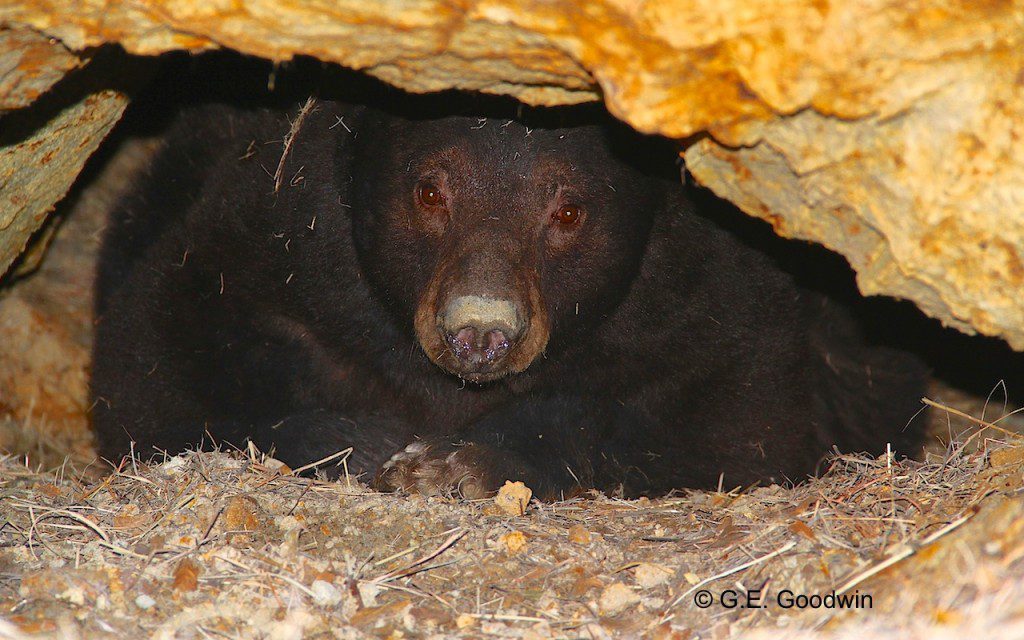
Save my home in the Patagonia Mountains. ©Gooch Goodwin
Mar 27, 2014 | Blog
Tips for Writing Comments for a Draft EA
By Jenny Neeley
1. Consider whether the effects significant. If they are, then the Forest Service must prepare a more detailed Environmental Impact Statement (EIS) rather than an Environmental Assessment (EA). When deciding whether the impacts are “significant” NEPA implementing regulations (40 CFR § 1508.27) require that agencies consider both:
- Context: The significance of an action must be analyzed in several contexts such as society as a whole, the affected region, the affected interests, and the locality. Significance varies with the setting of the proposed action. For instance, in the case of a site-specific action, significance would usually depend upon the effects in the locale rather than in the world as a whole. Both short- and long-term effects are relevant.
- Intensity: This refers to the severity of impact. …The following should be considered in evaluating intensity:
- Impacts that may be both beneficial and adverse. A significant effect may exist even if the Federal agency believes that on balance the effect will be beneficial.
- The degree to which the proposed action affects public health or safety.
- Unique characteristics of the geographic area such as proximity to historic or cultural resources, park lands, prime farmlands, wetlands, wild and scenic rivers, or ecologically critical areas.
- The degree to which the effects on the quality of the human environment are likely to be highly controversial.
- The degree to which the possible effects on the human environment are highly uncertain or involve unique or unknown risks.
- The degree to which the action may establish a precedent for future actions with significant effects or represents a decision in principle about a future consideration.
- Whether the action is related to other actions with individually insignificant but cumulatively significant impacts. Significance exists if it is reasonable to anticipate a cumulatively significant impact on the environment. Significance cannot be avoided by terming an action temporary or by breaking it down into small component parts.
- The degree to which the action may adversely affect districts, sites, highways, structures, or objects listed in or eligible for listing in the National Register of Historic Places or may cause loss or destruction of significant scientific, cultural, or historical resources.
- The degree to which the action may adversely affect an endangered or threatened species or its habitat that has been determined to be critical under the Endangered Species Act of 1973.
- Whether the action threatens a violation of Federal, State, or local law or requirements imposed for the protection of the environment.
2. Make your comments “substantive” and specific. The Forest Service is required by law to respond to all “substantive” comments submitted during the public comment period; the more specific and focused your comments are, the more detailed the response must be from the agency. Comments that simply say “I am opposed to this project” will not, by themselves, require a response from the agency.
3. Include the specific sections, pages and/or topics you are referencing in the Draft EA. To the extent you can, direct your comments to specific sections, pages or topics in the Draft EA, recognizing that some comments may be addressing missing or incomplete information, or even missing topics, that you feel should be addressed.
4. Make your letter personal! Your personal connection to the Patagonia Mountains and surrounding area is an incredibly important part of your comment letter. You should explain how will you be personally impacted if this proposal moves forward. Include information about how it will affect your home, your land, your family, and/or your business and livelihood. This is a great way to start your letter and to frame the rest of your comments, and will help get the Forest Service’s attention.
Additional Information
See our NEPA Resources page: http://www.patagoniaalliance.org/nepa-resources/
More information about Wildcat Silver at: http://www.patagoniaalliance.org/wildcat-silver/
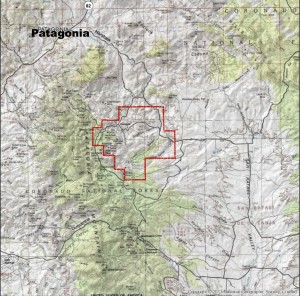
Mar 18, 2014 | Blog
The Coronado National Forest has released the draft Environmental Assessment (EA) for the AZ Mining Inc (aka Wildcat Silver, Arizona Minerals Inc) Hermosa exploratory mineral drilling project in the Patagonia Mountains.
Assist PARA in protecting our precious and imperiled natural resources such as clean water and wildlife, and actively advocate for the preservation of those resources by opposing AZ Mining Inc / Wildcat Silver’s draft EA drilling exploration plan.
- Plan to attend and ask questions at the public meeting hosted by the Coronado National Forest about AZ Mining Inc / Wildcat Silver’s draft Environmental Assessment at the Patagonia Union High School. Monday, March 24 from 6-8pm.
- Submit comments to the Forest Service about AZ Mining Inc / Wildcat Silver’s draft EA drilling plan. Want to know how? Attend PARA’s comment-writing workshop with Jenny Neeley and Sergio Avila on Wednesday, March 26, 4pm – 7pm Open House at Cady Hall.
- Sign a petition telling the Coronado National Forest that an EA is insufficient and a full Environmental Impact Statement is necessary when considering the Hermosa mineral drilling proposal. Sign Petition here.
- Advocate for the protection of our community’s drinking water, natural resources, and distinct, serene rural way-of-life by making a donation. Every single donation assists PARA in our watchdog efforts for the Patagonia area.
Deadline to comment is Monday, April 7, 2014. The Hermosa draft EA is available online at the Forest Service project webpage:http://www.fs.fed.us/nepa/nepa_project_exp.php?project=41158.

Hermosa Drilling Proposal Location
To submit your comments:
Include your name, postal address, title of the project (Hermosa Drilling Project) and signature (or verification of identity upon request.)
Comments may be submitted as follows:
Email: Electronic comments including attachments may be submitted by email in word (.doc), rich text format (.rtf), text (.txt), portable document format (.pdf), and hypertext markup language (.html) to: comments-southwestern-coronado@fs.fed.us with subject: Hermosa Drilling Project.
Facsimile: 520-388-8305, ATTN: Margie DeRose
U.S. Mail: Coronado National Forest, ATTN: Margie DeRose, 300 W. Congress St., Tucson, AZ 85701
Hand-delivery: 6th floor, 300 W. Congress St., Tucson, AZ 85701. Monday through Friday, 8 a.m. to 4:30 p.m., excluding Federal holidays.
Only individuals who submit comments about this proposed project during this public comment period will be eligible to file an objection.
Exposing New Threats
While AZ Mining Inc / Wildcat Silver’s draft EA drilling exploration is up for public review and comment,
the plans that AZ Mining Inc / Wildcat Silver is sharing with investors are for an open pit silver mine in the Patagonia Mountains with the details revealed in a document found on their website:
“Form 43-101F1 Technical Report Pre-Feasibility Study.”
AZ Mining Inc / Wildcat Silver’s Pre-Feasibility Study contains a wide range of information about the open pit mine they want to dig in the Patagonia Mountains. PARA and Earthworks are coordinating to analyze AZ Mining Inc / Wildcat Silver’s pre-feasibility study so that the community can fully understand the impacts of the proposed open pit mine.
Earthworks is a national non-profit organization based in Washington D.C. that is “dedicated to protecting communities and the environment from the impacts of irresponsible mineral and energy development while seeking sustainable solutions. Earthworks stands for clean water, healthy communities and corporate accountability.”
PARA has teamed with Earthworks to develop an independent, peer-reviewed report of the potential consequences of AZ Mining Inc / Wildcat Silver’s open pit mine on our groundwater, the potential for acid drainage contamination, heavy metals pollution, as well as the range of issues associated with air pollution, light and noise pollution.
By teaming with Earthworks and commissioning this report, the dangers of mining in the Patagonia Mountains can no longer be dismissed as opinion, but will present a meaningful and credible analysis highlighting specific and anticipated impacts from the proposed AZ Mining Inc / Wildcat Silver open pit mine.
We are fortunate to have a group of amazing and committed community members and generous donors supporting our work that make everything we do for the Patagonia area possible.
Please consider a gift today to ensure that we have the scientific analyses necessary to actively challenge the Hermosa proposal and AZ Mining Inc / Wildcat Silver’s web of obfuscation. You may contribute securely online at: www.patagoniaalliance.org/donations. Also, please consider a recurring monthly contribution through PayPal.
Every single contribution makes a sizable difference in our organization and ultimately for the community of Patagonia. It is only because of the generous support from people like you that we can undertake this critical work. Thank you!
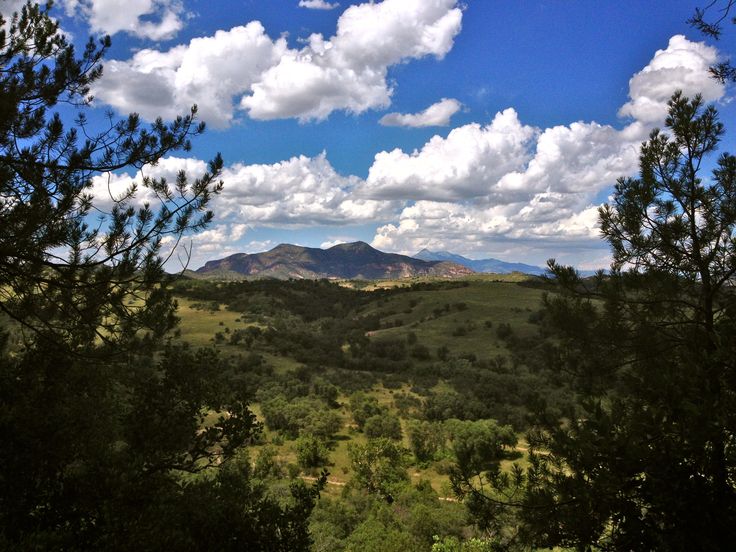
One site of Hermosa Mineral Drilling Proposal: Corral Canyon in the Patagonia Mountains.
Aug 6, 2013 | Blog
By Wendy Russell
The Forest Service has re-opened the public comment period for the Regal Resources Sunnyside mining exploration project in Humboldt Canyon. This is the same project that had an earlier scoping period back in November 2011. According to the scoping notice from the Coronado National Forest, Sierra Vista District Ranger Mark Ruggiero has “decided to offer another scoping period in conjunction with this formal comment period to ensure that public involvement is current and comprehensive.”
Regal Resources Inc. is a junior mining company based in Canada. Its property in the Patagonia Mountains consists of 295 claims on the Coronado National Forest totaling approximately 5,900 acres. The scoping notice states that the Sunnyside mining exploration project is for 6 exploratory drilling sites to collect core samples to assess potential copper mineralization in Humboldt Canyon. The operation would run 24 hours a day, 7 days a week. Water would be hauled in and access for the project would be from the town of Patagonia by way of Harshaw Road, aka National Forest System Roads 49 and 58. Access within the project area would be via NFSR 812 and 4685.
According to the scoping notice, “if you submitted comments in 2011 regarding the Sunnyside project, you MUST advise us [Forest Service] in writing that you would like your previous comments to be considered as responsive to the legal notice for eligibility to appeal the decision: you do not have to resubmit your comments.” If you did not receive the scoping notice and would like to receive that information from the Forest Service contact Patrick Morton, FS Geologist, at (520)388-8348 or pmorton@fs.fed.us.
Link to Scoping Notice for Sunnyside mining project
Link to Sunnyside project map
Link to Sunnyside Plan of Operation
Link to USFS project page for Regal Resource’s Sunnyside project in Humboldt Canyon.
The Patagonia Area Resource Alliance co-hosted a comment writing workshop with Sky Island Alliance on Thursday, August 1 at 6:30 PM in Cady Hall to assist folks who want to comment on the Sunnyside project. It is our only opportunity to get the Forest Service to examine all aspects of this mining exploration project that may concern us as local citizens who live and enjoy recreation around the Patagonia Mountains. Remember, you’re only eligible to challenge the decision rendered by the Forest Service regarding this exploratory drilling project if you submit a comment within the 30-day comment period. The estimated deadline for comments is August 10, 2013.
We will be posting comment suggestions and a template from that workshop.
If you wish to submit a comment:
Please include the project name (Sunnyside Project) in the subject line of your response and/or email.
Comments may be submitted as follows:
Email: comments-southwestern-coronado@fs.fed.us
Facsimile: 520-388-8305, ATTN: Patrick Morton
U.S. Mail: Coronado National Forest, ATTN: Patrick Morton, 300 W. Congress St., Tucson, AZ 85701
Hand-delivery: 6th floor, 300 W. Congress St., Tucson, AZ 85701
Monday through Friday, 8 a.m. to 4:30 p.m., excluding Federal holidays
Also note: the Wildcat Silver Hermosa mining exploration project opened its public comment period in early August.
Aug 2, 2013 | Blog
By Carolyn Shafer
PARA board member
Published in the Patagonia Regional Times, August 2013.
“We Dig Jobs” is a new bumper sticker seen around town. Recently released reports state that while employment has improved in Santa Cruz County there remains a high unemployment rate–so let’s talk about jobs.
Around 1960 the last mines closed. Jobs evaporated over night. While ranching continued in Eastern Santa Cruz County, the economy was rebuilt around tourism. The region became known as a world wide destination for birders and a destination for USA visitors especially our fellow Arizonans because of its significant biological diversity. Building on the strong economic base of ranching and tourism, other industries such as local food production, wineries (USA Today lists this region as one of the top ten wine trails in the country), eco-tourism and heritage tourism are contributing to the economic growth and employment opportunities.
In December 2011, the Mountain Empire Business Survey identified 217 small local businesses that employ about 800 people. Economist Dr Tom Powers analyzed the survey and concluded that 51% of business sales and about half of the jobs are attributable to landscape and cultural amenities (hiking, biking, hunting, birding, equestrian activities, ranches, relaxation getaways, health and wellness, historic and cultural sites, artisans and artists, dining, shopping). Mining will destroy the landscapes and the cultural amenities and as a result about half the business revenue and half of the 800 existing jobs will be gone.
Corporate representatives of AZ Mining Inc (Wildcat Silver) were recently quoted in the media saying that the Hermosa mining project will bring 250 jobs. However, it appears likely that this community could lose 400 existing jobs because of mining. It is doubtful that many of the 200+ local businesses could survive a 50% loss of revenue likely to result from destruction of landscapes by mining. AZ Mining Inc (Wildcat Silver) projects that the open pit mine would operate for 16 years assuming best case scenario. After which, once again those mining jobs would be gone.
One thing we can do is proactively engage our local unemployed citizens in vocational and educational assessments and other employment services provided by Santa Cruz County Career One Stop. Let’s create a community reality of an economic model that emphasizes job stability, environmental sustainability, equitable economic justice, and the well-being of the individual and the family as more important than the rate of financial return for only a select few.
AUTHOR’S FOOTNOTE: I asked the AZ Mining Inc (Wildcat Silver) representative for specific information regarding the classification of those jobs including salary ranges and qualifications (education, experience, skills). I have been told that information will be provided in a document currently being reviewed for release to the company’s investors. Wildcat Silver’s website states that the production jobs will be 12-hour shifts on a rotating night /day shift schedule (four night shifts, three days off, three day shifts, one day off, three night shifts, three days off, four day shifts, seven days off.)









 Test results showed off-the-chart concentrations of lead and arsenic in water, soil and waste rock samples at the Lead Queen site. High concentrations of zinc, copper and aluminum were also found. All of these heavy metals are listed as “hazardous substances” and can cause serious – or even deadly – health issues. The red-orange color of the sludge was due to extreme concentrations of iron.
Test results showed off-the-chart concentrations of lead and arsenic in water, soil and waste rock samples at the Lead Queen site. High concentrations of zinc, copper and aluminum were also found. All of these heavy metals are listed as “hazardous substances” and can cause serious – or even deadly – health issues. The red-orange color of the sludge was due to extreme concentrations of iron. The Forest Service document also acknowledges that the “Patagonia Mountains have high levels of biodiversity and are home to a variety of species protected under the Endangered Species Act including jaguar, ocelot, lesser long-nosed bat, Mexican spotted owl, western yellow-billed cuckoo, Sonora tiger salamander, and the northern Mexican gartersnake.”
The Forest Service document also acknowledges that the “Patagonia Mountains have high levels of biodiversity and are home to a variety of species protected under the Endangered Species Act including jaguar, ocelot, lesser long-nosed bat, Mexican spotted owl, western yellow-billed cuckoo, Sonora tiger salamander, and the northern Mexican gartersnake.”












 Patagonia – The Hermosa silver mine proposed inside Patagonia, Arizona’s Municipal Supply Watershed could deplete the town’s drinking water and perpetually contaminate area groundwater with acid mine drainage, according to a new peer-reviewed report.
Patagonia – The Hermosa silver mine proposed inside Patagonia, Arizona’s Municipal Supply Watershed could deplete the town’s drinking water and perpetually contaminate area groundwater with acid mine drainage, according to a new peer-reviewed report.










 In the 50 years since the last mining bust, the community has rebuilt its local economy based on ranching, tourism, local food production and recreational amenities (birding, hunting, camping, cycling, hiking, etc).
In the 50 years since the last mining bust, the community has rebuilt its local economy based on ranching, tourism, local food production and recreational amenities (birding, hunting, camping, cycling, hiking, etc).
 Jenny Neeley reprised her role as our National Environmental Policy Act (NEPA) expert for tips on filing public comments on the Hermosa draft Environmental Assessment (EA) released by the Coronado National Forest. The purpose of an Environmental Assessment is to determine whether the impacts of a project will be significant. The goal for our comments on the draft EA is to demonstrate that the Hermosa project impacts will be significant so that the Forest Service conducts a more detailed and comprehensive Environmental Impact Statement.
Jenny Neeley reprised her role as our National Environmental Policy Act (NEPA) expert for tips on filing public comments on the Hermosa draft Environmental Assessment (EA) released by the Coronado National Forest. The purpose of an Environmental Assessment is to determine whether the impacts of a project will be significant. The goal for our comments on the draft EA is to demonstrate that the Hermosa project impacts will be significant so that the Forest Service conducts a more detailed and comprehensive Environmental Impact Statement. 



